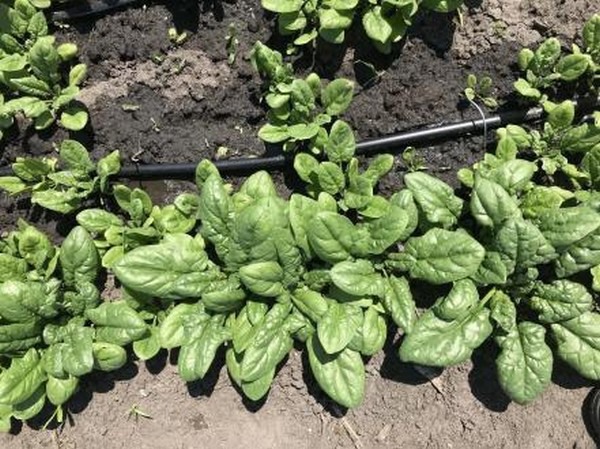A recent publication from Iowa State University Extension and Outreach highlights the ease of growing spinach in Iowa. In “Spinach Production Under Midwest Growing Conditions,” Ajay Nair, associate professor in horticulture and extension vegetable production specialist at Iowa State, and graduate research assistant Anne Carey provide an overview of spinach production in the Midwest.
“Spinach is an important leafy green crop in Iowa and is a staple of many CSAs, farmers markets, and direct-to-consumer markets,” said Nair. “It is well adapted to Iowa and can be grown both in open fields and high tunnels. Spinach is one of the most nutrient-rich plant foods and contains vitamins, minerals, and antioxidants.”

s Nair explains because early spring and fall provide the most ideal growing conditions for spinach, many cultivars thrive in Iowa’s climate. The publication summarizes a study performed at Iowa State University Horticulture Research Station, which compared various cultivars of spinach for spring production in the upper Midwest. The publication highlights cultivars ideal for various seasons, including cultivars grown for overwintering high tunnel production.
“When choosing a spinach cultivar, growers should pay close attention to the season in which the spinach will be produced,” added Nair. “Specific cultivars have been developed for early spring and fall, summer, or overwinter production.”
The publication also addresses site selection and planning. As the publication explains, spinach prefers cool, fertile, well-drained, sandy-loam soils with a pH between 6.0 and 7.5. Direct sowing is recommended, and while summer production is not recommended in Iowa, spinach can continue to be grown in high tunnels with secondary row covers over winter.
The publication also discusses irrigation, fertilization, weed management, and common pests and diseases that affect spinach and includes management options for organic production.
Finally, a table highlighting marketable yields and average leaf weights for the various cultivars tested at the Iowa State University Horticulture Research Station is provided.
To download the publication for free, visit the Iowa State University Extension Store.
For more information:
Iowa State University
www.iastate.edu
